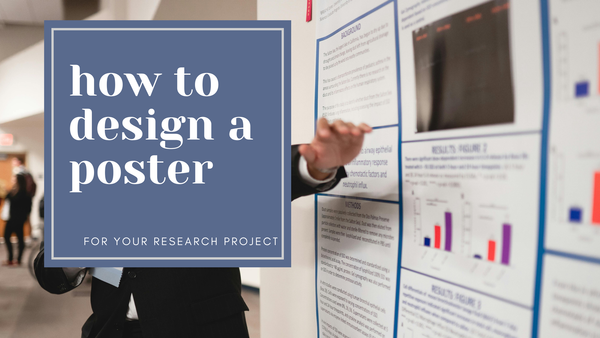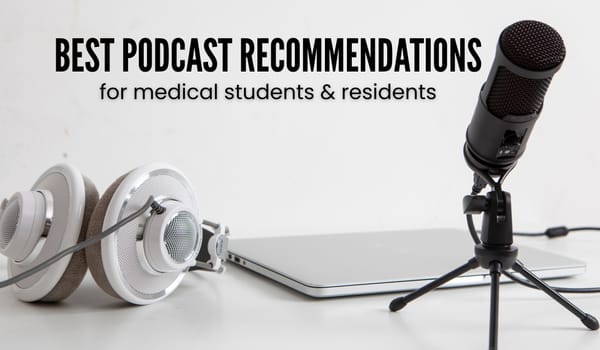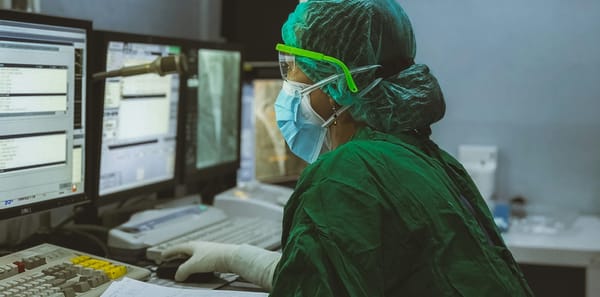Medical School in Europe vs. the US
A lot of people considering attending medical school are curious about what the process is like in…
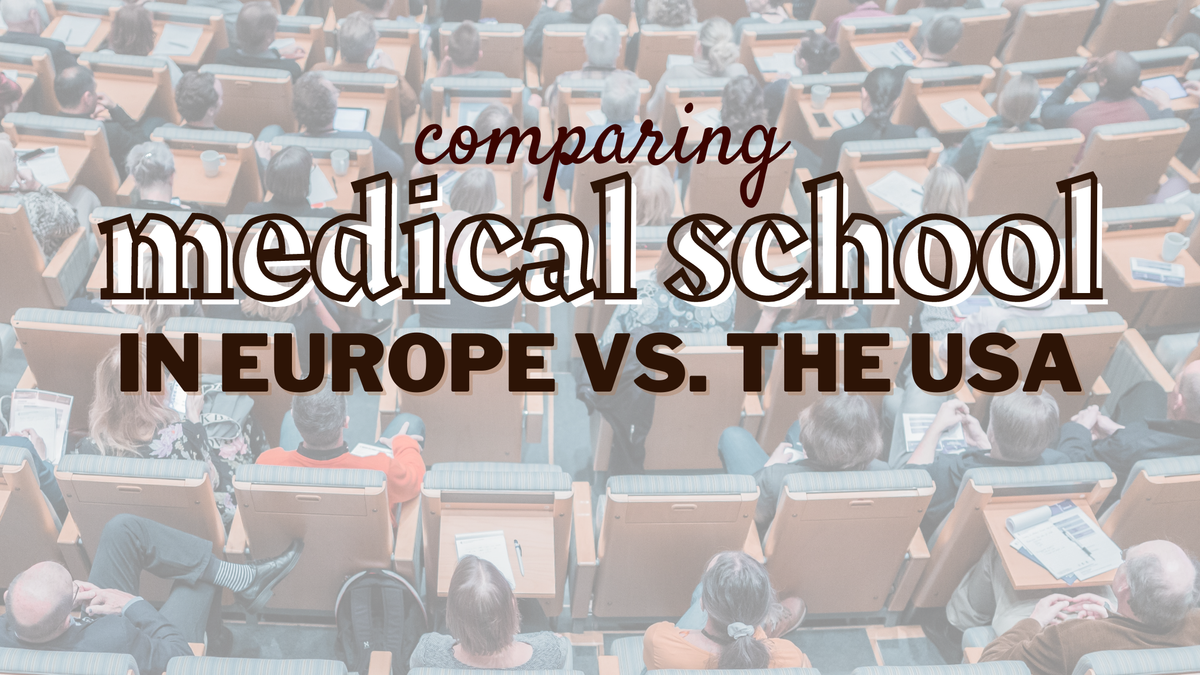
A lot of people considering attending medical school are curious about what the process is like in various countries, so I’d like to talk about two regions that I get a lot of questions about.
As a graduate of medical school in Europe, but having grown up in the United States, I have a little knowledge about both: let’s start with Europe first, which I know a lot of my American readers are rather unfamiliar with.
I will only be discussing medical degree programs that teach in English. Most countries have medical schools for their own citizens, in which case the language of teaching is the local language.
Medical School in Europe
Europe is made up for so many countries, many with their own medical education intricacies, so this post might not be completely accurate in the smallest details. I hope to explain what medical education in general looks like in most European countries, including the country where I attended med school.
There are a few countries that teach in English, including (but not limited to): Italy, Czech Republic, Poland, Croatia, Hungary, Romania. There is also of course the UK and Ireland which offer medical education in English, but it’s a little different than the rest of Europe and I have no experience with it, so I’ll focus more on the mainland countries.
Length & Curriculum
Medical school in Europe is generally 6 years.
Wow, right? This surprised a lot of my American followers. The reasoning is that the traditional path to medicine in Europe is high school –> medical school. That means that you apply for medical school while you’re still in high school, and you begin your studies when you’re about 18/19 (if you take no gap years).
The typical curriculum for a European medical school will be the following:
- Years 1-3: basic sciences (biophysics, chemistry, biochemistry, anatomy, histology, biostatistics, ethics, pathology, pharmacology, etc.)
- Years 4-5: clinical courses (internal subspecialties like cardiology, nephrology, etc.; surgery; ENT; neurology; dermatology, and so on)
- Year 6: rotations (working on the wards – no more lectures, just clinical rotations)
Your European university might differ in a few things, but this gives you a general idea. For us, we had clinical lectures and then bedside learning in years 4-5, and our final year was meant to be like an intern year, during which we did rotations in the six core subjects (internal, pediatrics, OBGYN, psychiatry, neurology, surgery).
Admission Exam
I can’t speak for admission requirements at all universities, but for my school, you needed to take an entrance exam that covered high school level biology, chemistry and physics. The university admissions page had sample questions to give students an idea of the level of knowledge required.
Additionally, there was an interview, which was an important aspect of admission. This was done in-person in previous years; I don’t know if that has/will change.
*Note: in general, admission to the English program at these universities is easier than admission into medical schools in the US, based on my experience. It has gotten more competitive in recent years, but the focus on volunteering, extracurriculars, shadowing, research experience, etc. is a lot less than in the States. Furthermore, my university (and likely some others) has a higher rate of attrition than most medical schools in the US. This means that while admission is easier, it can be a bit more challenging to stay in medical school and graduate – a lot of students end up repeating a year, and there are certainly those that drop out entirely.
Cost (Approximate)
Tuition for my medical school, when I started in 2015, was $9000 USD/semester. I am a US citizen, but this university didn’t participate in FAFSA (the federal aid given to US citizens), and I don’t know of any scholarship opportunities, so we paid out of pocket for medical school.
For the 12 semesters, tuition came out to $108,000. That does not include room&board, as the US ‘cost of attendance’ estimates generally include. For me, I lived in an apartment in the city with my boyfriend, and cost of living in this city is generally lower than in the US, so it was a bit better in that sense.
I’m not familiar with the cost of other medical schools around Europe, but I believe they are around this, perhaps a bit cheaper if they are in the countryside or more east. Many of my European classmates received scholarships from their home countries, as well as loans from their government, but it varies by country. The other students could take out private loans or, alternatively, pay out of pocket.
Exams during Medical School
In my European medical school, a good chunk of our exams were ORAL. That meant that we prepared for exams from predetermined topic lists, which a topic might be something like, “diagnosis and management type 1 diabetes,” and our exams were mainly a conversation, in which the examiner had you to present on the topic and then asked questions.
A select few of our classes had written tests, mostly with multiple choice questions, but these were more uncommon.
We didn’t have any standardized tests, until the final year, when at the end of our medical education, all med students across the country took the same exam. This exam was meant to cover topics from all core subjects and was multiple choice.
——————————-
An important consideration: in most European countries, although the language of education is English, the patients will likely speak only the local language.
If you are studying medicine in Europe and plan to go to the US, I have some blog posts on my website dedicated to applying as an international medical graduate (IMG), linked here (Step 1 as an IMG) and here (the Match process). The average match rate for foreign-trained graduates is 57.2%, based on the 2021 Match Data.
Medical School in the US
The path to medical school in the United States is a bit different, let me explain.
Mandatory Pre-med
In the US, students get an undergraduate (bachelor’s) degree in something (generally, anything, even things unrelated to medicine) with a ‘pre-med’ focus. This is usually a four-year degree (rarely, it can be done in three years), and the premed focus allows you to fulfill the requirements that are required for entering medical school. Pre-med classes include biology, general chemistry, organic chemistry, physics, biochemistry, etc., each which a different length. This means that while you are fulfilling your requirements for an art history degree, you take these additional classes.
Entrance Exam to Medical School
There is a standardized entrance exam that most schools required, called the MCAT (medical college admission test). This exam covers: Biological and Biochemical Foundations of Living Systems; Chemical and Physical Foundations of Biological Systems; Psychological, Social, and Biological Foundations of Behavior; and Critical Analysis and Reasoning Skills, and the score is an important factor in your acceptance to medical school.
NOTE: In the US, there are two types of medical degrees – medical doctor (MD) and doctor of osteopathy (DO). While the curriculums are very similar, with the exception of added information in DO school related to osteopathy, the Match rates are (unfortunately) not quite equivalent. The system is changing in an effort to decrease the discrepancy, but it’s not quite there just yet (as you can see in the 2021 Match data).
Besides the MCAT, admission committees rely on other aspects of your application to see if you’d be a qualified applicant. From my experience with undergrad in the US, as well as following many premed/US medical students, I have garnered the following information:
- MCAT scores are important, but not the only determinant
- volunteering and extra-curricular activities are helpful (being a leader of a club, part of an organization, etc.)
- shadowing doctors is very beneficial
- grades from undergraduate matter (your GPA or grade point average can be a cutoff at more competitive schools)
- personal statement (like a motivation letter) which supports your interest in medicine
That being said, there are lots of resources out there on how to put together a strong application. you can learn from YouTube/Instagram accounts who’ve been there, done that, as well as more official sources, like AMCAS (American Medical College Application Service).
Length & Curriculum
Once accepted into medical school, you will have four years of study ahead of you. The first two years are generally the ‘basic science’ years, and the last two are the clinical years. Depending on the school, you might receive grades (like in college/high school) or your courses might be pass/fail.
After your basic science years (i.e. at the end of the 2nd year), you take the USMLE Step 1 exam (US Medical Licensing Exam), and then from third year, you hit the wards.
You rotate in different specialties in your third and fourth year, spending weeks at a time being a part of the team in various hospitals or departments. You must complete core rotations, which are required, and then you have the opportunity to experience some more unique specialties via elective rotations.
Most students take the second USMLE, the Step 2 CK (Clinical Knowledge) exam at the end of their third year, right before fourth year.
Cost (Approximate)
This is a tricky question to answer, because there’s a lot of variety between schools. (Fun fact: it’s also a little bit challenging to find the information on certain websites, hmm).
One of the key differences in tuition is whether you are an in-state student, or out-of-state (OOS). OOS costs are generally a bit higher – I took the random example of the University of Iowa School of Medicine (resident vs. non-resident prices):
Those students who are unable to pay out of pocket usually take out loans to cover the cost of attending med school. A July 2021 study found that the average medical school debt is $215,900. If your family qualifies, you are eligible for FAFSA (the federal loan), and there are scholarship opportunities as well, although to my knowledge, there are fewer scholarships available for medical school than for undergraduate degrees [for instance, I got a “full ride” to college when I was 18, but I wouldn’t have gotten much help for medical school].
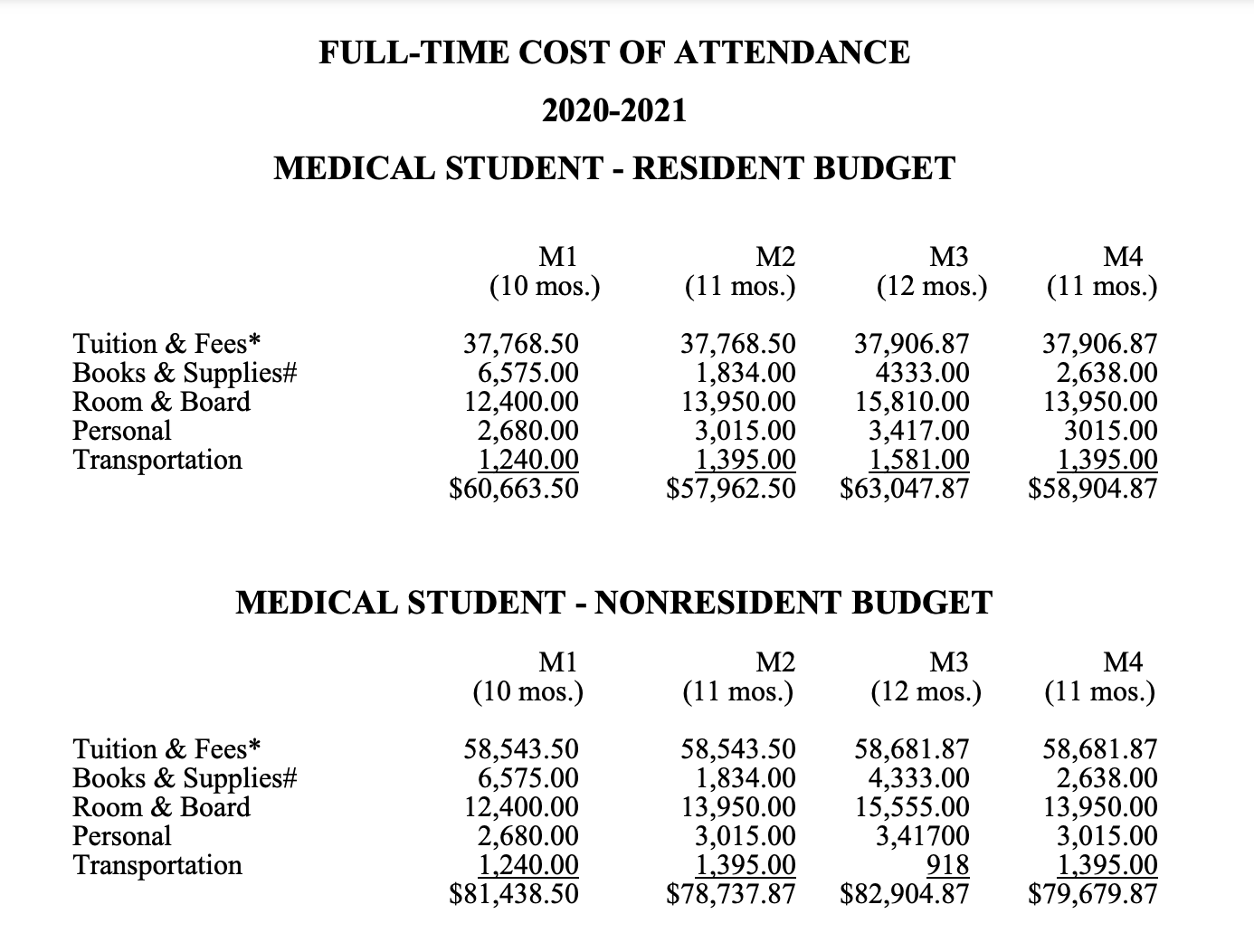
Application to Residency
If you are studying in the US, you will likely be applying to residency in the beginning of your fourth year. The average match rate for US medical students is 92.8% (based on the 2021 Match data), but of course there are some specialties that are more challenging than others.
——————-
In conclusion, the journeys are a little bit different (or quite a bit different). I hope this was informative – good luck with your journey!
Other blog posts that might interest you:
Photo credit: Mikael Kristenson on Unsplash

